Keeping the screws turning and the lights burning.
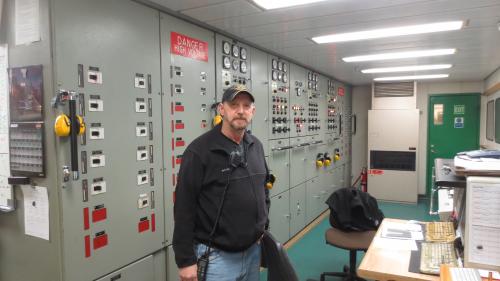
We are continuing to pack up. I took a quick break to run up to the bridge. It was shift change and Rob was discussing the next four hours with Brandon. I looked out the wall of windows. Is asked Brandon ,"is that the direction we are heading". It didn't look too bad. He responded "yes, but look to the west", that weather will be in our course shortly." Oh boy… looks like things are going to get rough soon. I guess that is why these latitudes are called the furious fifties.
When I returned to the dry lab I was met with J.P. Pierce, the ships Chief Engineer. I had asked early in the trip if it was possible to see the engine room. He had finally found some time in his busy schedule to accommodate me.
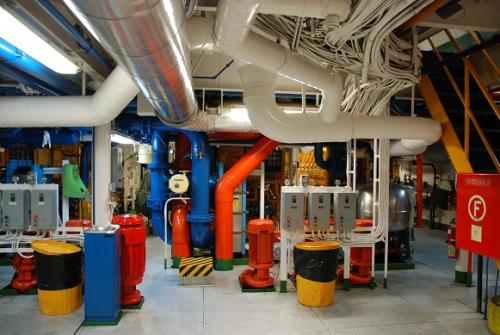
On the first day of the cruise a colleague with many cruises under his belt commented as J.P. and the other engineers walked by. "Those are the guys that keep us happy and alive". Nothing could be truer. On this cruise there are 4 engineers, J.P. being the chief and 3 very experienced assistants, Kaleb , Rob and Trevor.
Here is a list of some of the machines they operate and maintain.
- Ten Caterpillar diesel engines. 4 are responsible for the 2 stern propellers. When the ship is not breaking ice only 2 are running to save fuel. There are 2 additional motors, each with their own engines. One is the stern thruster and the other is the bow thruster. Both are used to steer the ship or keep it stationary when needed. The bow thruster is kind of like an impeller in a jet ski. Water is sucked in then dropped over a wagon wheel type device, enabling the ship to be moved 360 degrees. The stern engines produce 12,720 hp, the stern thruster 800hp and the bow thruster 1510hp. The additional 4 engines are for the electrical generators. With all that power it requires a lot of fuel. The ship loads 460,000 gallons prior to the cruise. As of this writing we have averaged 5901 gallons per day so I think we have enough to get back. (Let's see 5910 gal. x 41 days=? 460,000 gal. -? =??. ?? Divided by 6 days =….) Sorry had to throw a little math to keep my class thinking.
Each engine must be serviced every 750 to 1000 hours while underway. Every 5 years the ship is dry docked for major servicing and a full paint job.
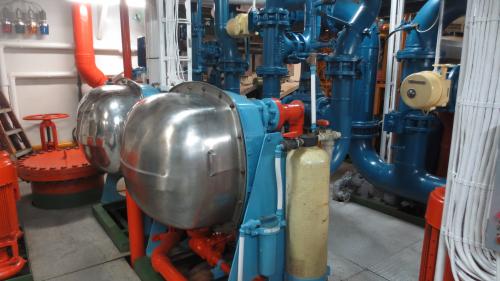
- Two freshwater makers. The energy needed to distill the sea water comes from waste heat from the engines. They are capable of making 1000's of gallons daily. The water rivals the best spring water you will ever taste.
- There are 2 chill water coolers that keep all the science coolers like Big Antarctica operating smoothly.
- 2 massive compressors that power the guns of the seismic streamer.
- A full machine shop and all the parts needed to repair everything as well as a full wood shop.
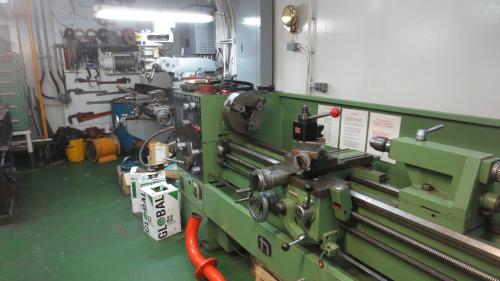
All the sewage is treated by waste heat. No chemicals are used.
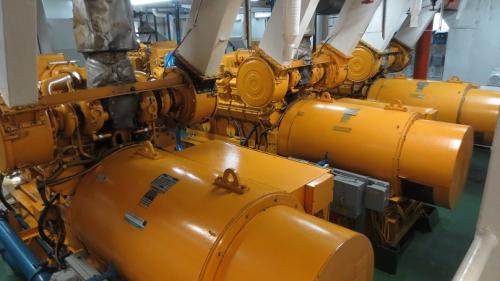
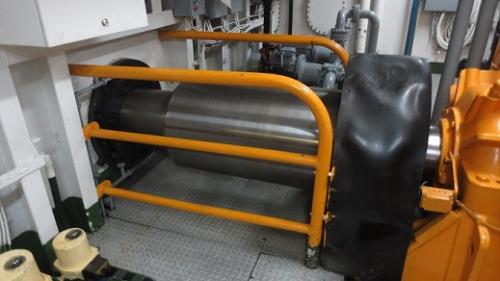
Just like everything else on and off the ship, it is hard to explain the operations below the deck in pictures and a few paragraphs. All I can say in terms of the engineering of the ship it is mind boggling.
J.P. has been with the ship since it was commissioned in 1992. He comes from the oil industry and was originally a compressor mechanic eventually working his way up to Chief Engineer. When you work your way up through years of hard work and experience on a ship you are known as a hawespiper. The hawes pipe is where the chain of the anchor is drawn back up to the ship. Being called a hawespiper is an honor. J.P. certainly deserves it. I asked J.P why he decided to move from the oil industry and venture onto an icebreaker. "I thought it would be exciting to travel to Antarctica. I figured I would try it for 5 years then return. But this is such an amazing place I decided to stay." Good choice. Thanks J.P.


Comments